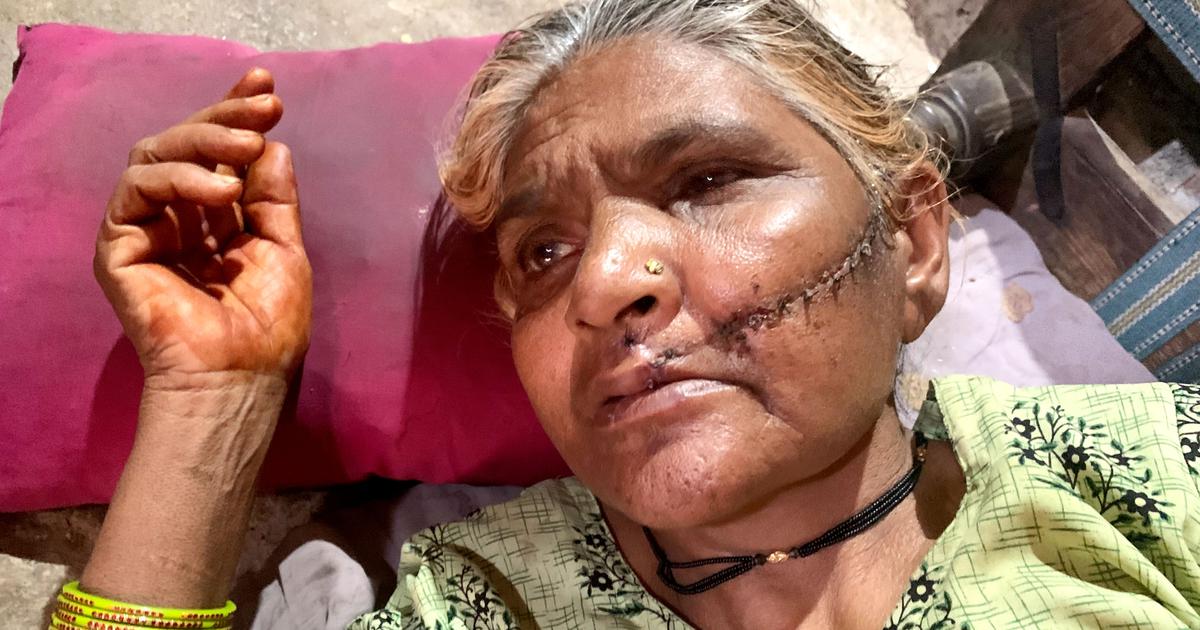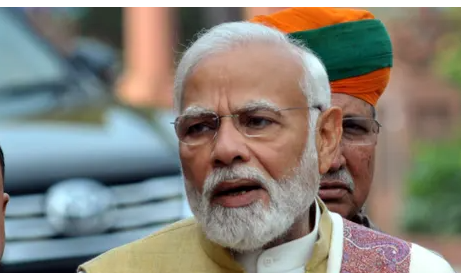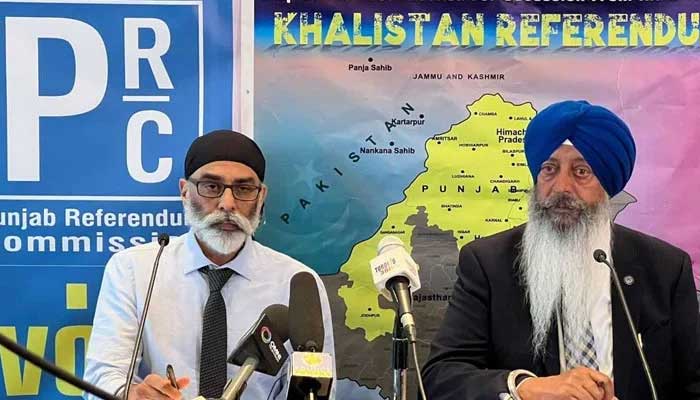
Srinagar: A scene in the recently released film, The Kashmir Files, shows a Hindu woman being stripped and sawed alive by militants in the 1990s as her Muslim neighbours looked on.
All it took to recreate this scene in Madhya Pradesh’s Khargone was a mannequin borrowed from a store, a pile of wooden logs to evoke the setting of a saw mill, and a bicycle wheel to stand in for an electrical saw, said Raju Sharma, the district president of Shiv Sena, who had sponsored the jhaanki, or tableau, as part of the Ram Navami procession in the town on April 10.
The tableau that recreated a scene from the film, ‘The Kashmir Files’, had been sponsored by a Shiv Sena leader in Khargone. Photo by special arrangement.
The installation was placed on a tractor trolley. Its back displayed the distraught face of actor Anupam Kher, who plays the woman’s father-in-law in the film. Alongside was a warning in bold text: “Wake up Hindus, lest other states in India become Kashmir.”
To maximise the impact of the installation, Sharma, who owns a sand supply business, got a friend to mix the woman’s sobs from the film with a music track featuring belligerent cries of “Jai Shri Ram” and “Har Har Mahadev”.
On Ram Navami, celebrated as the birthday of Ram, this soundtrack became part of a high-decibel cacophony at Talab Chowk, a town square framed by the minarets of a mosque, where Hindu groups had been given permission to assemble at 2 pm, before proceeding on a tour of the town.
Instead, three hours later, at 5 pm, when Muslims gathered at the mosque for the evening Asar prayer, the procession had still not departed, several eyewitnesses said. Videos show disc jockeys blaring raucous music as thousands of Hindus – mostly young men – spilled over from the chowk into nearby lanes. Some waved flags of “Ram Rajya”, or the rule of Ram.
Suddenly, stones began to fly – Hindus claim they came from a lane behind the mosque, Muslims say members of the procession first threw them at the police.
By 6 pm, rioting and arson had broken out in several neighbourhoods of the town. Near the masjid, Siraj Bi bolted from her tiny house as a mob set it on fire. The elderly widow weaves garlands for a living. Among her belongings scorched that day were clothes she had stitched for her daughter’s dowry.
Two km away, in Sanjay Nagar, Nannu Bai Bhandole too ran for her life as flames engulfed the front part of the house that she had painstakingly built. The autorickshaw that the Dalit woman’s son had purchased on a loan was reduced to a burnt carcass.
The next five hours brought a steady stream of injured people to the Khargone district hospital. One of them was 16-year-old Shivam Shukla, who sustained head injuries and had to be moved to an intensive care unit in the nearby city of Indore. The same night, a body landed in the local mortuary with wounds all over. Four days later, it was identified later as 28-year-old Ibraish Khan.
Communal violence is not unusual in this hardscrabble town of about 125,000 people, over 60% of whom are Hindu, the rest Muslim. In recent years, festival processions of both communities appear to have become DJ-soaked displays of male aggression.
The Ram Navami riot was not seen as worthy of front page news in India – after all, Khargone was just one of many places in the country that had seen violence that day.
But what followed the next morning grabbed even international attention.
On the morning of April 11, Madhya Pradesh home minister told reporters in the state capital: “The houses of those pelting stones will be turned into a pile of stones.”
By noon, while Khargone was still under curfew, bulldozers came crashing down on the modest single-room home of Hasina Fakhroo built on government land using Pradhan Mantri Awas Yojana, or prime minister’s housing scheme funds. The front of Javed Shaikh’s chemist shop, housed in the compound of the Talab Chowk mosque, was shaved off. A tin-shed kiosk of a disabled man, Wasim Sheikh, was flattened.
According to a document that a senior official of the state home department sent to reporters in Bhopal, 49 properties were demolished in Khargone that day. All were owned by Muslims.
More demolitions followed the next day – even the affluent were not spared. A five-storey hotel owned by the family of Alim Shaikh, a former Congress corporator in the city, was hollowed out. “The administration claims the hotel front was jutting out on the road, but so were the buildings next to us,” said his cousin, Shahid Khan. “Why were they spared?”
The administration maintains the demolitions were part of a routine “anti-encroachment drive”. But two senior officials who spoke to Scroll.in on the condition of anonymity, admitted they were done to “restore peace” and “control the situation”.
As one put it, the “Hs” (shorthand for Hindus) were convinced that the “Ms” (shorthand for Muslims) had first attacked their religious procession, then their homes and properties, as part of a larger design. “Therefore, we identified the areas where rioting had taken place and targeted the encroachments there,” the official said.
“There was a lot of pressure,” said the second official. “People were saying yeh todo, wo todo” – break this, break that. “But the administration only went for what was illegal.”
Many property owners dispute the allegations of illegality. They say they had not been served notice as required by law. District collector Anugraha P denied this. But when asked for a copy of the notices, she told this reporter to file a Right to Information request.
In response to a question about whether action had been initiated against the organisers of the Ram Navami procession for prolonging their stay at Talab Chowk, she said, “More than half of the gathering had already moved forward.”
The Khargone demolitions have now inspired copy-cat action in Gujarat and North Delhi – like Madhya Pradesh, on the orders of India’s ruling Bharatiya Janata Party. This has deepened Muslim fears around the country, of first being provoked, then being punished.
But what is even more chilling is that the demolitions haven’t doused Hindu anger in Khargone – instead, The Kashmir Files continues to inflame passions. Scroll. In


